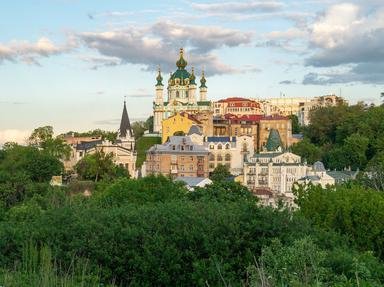Quiz Answer Key and Fun Facts
1. Occurred in 1990
2. Was mostly a phenomenon of Right-Bank Ukraine
3. Resulted in the promise of multi-party elections, fulfilled four years after the protests
4. Was actually opposed by the man who first became the President of independent Ukraine
5. Occurred in 2004
6. Began after the falsification of the results of a presidential election
7. Was mostly centered on the capital of Kyiv
8. Forces opposed to it gathered in Sievierodonetsk to hold a separatist Congress
9. Occurred in 2013-2014
10. Had a high number of casualties, including the Heavenly Hundred
11. On its aftermath, the incumbent President abandoned his office
12. After its success Russia seized Crimea and began its invasion of Ukraine's east
Source: Author
DeepHistory
This quiz was reviewed by FunTrivia editor
ponycargirl before going online.
Any errors found in FunTrivia content are routinely corrected through our feedback system.
